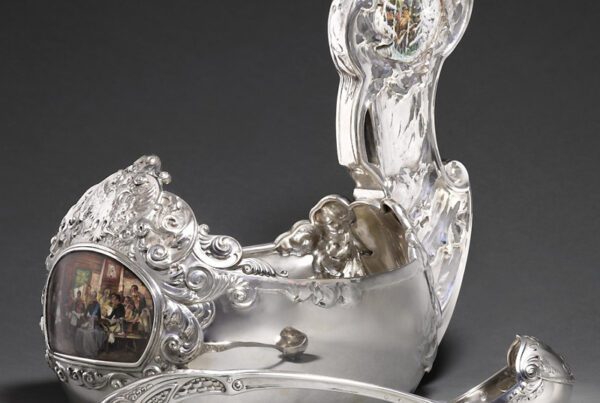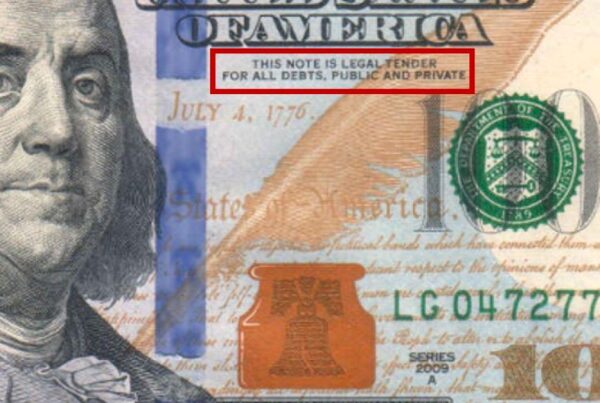The interview that Hermitage boss Mikhail Piotrovsky gave to the Russian media outlet RBK on 7 April 2021 left me – and everyone else with a professional interest in Fabergé – gawping in disbelief at his utter lack of knowledge or basic understanding of the subject. Excerpts and comments:
Mikhail Piotrovsky: We have just staged an exhibition devoted to Fabergé. Due to certain rumours that arose, we tried to show – and had to show – that there exists a world of Fabergé, and that Fabergé is a brand that has a lot hanging on it.
Andre Ruzhnikov: Fog and drivel! What on earth does ‘World of Fabergé’ mean?
MP: An item may be authentic, or not authentic, or somewhere in-between.
AR: Bullshit. Just what has Mikhail Piotrovsky been smoking?

The Authentic Mikhail Piotrovsky: Psychedelic Hallucinations and Madness inside the Hermitage
MP: There is a whole cultural phenomenon called ‘Fabergé.’ Let me explain.
AR: What entitles Piotrovsky to do any explaining? Is he a Fabergé expert? The hell he is, what he proclaimed about Faberge shows that he is unaware even about the obvious.
MP: If you look seriously at all this, only a very small number of artworks, even paintings, are 100% fake – for everything else it’s a matter of degree.
AR: Really? All six of Ivanov’s eggs shown in the Hermitage are 100% fake. Four were either brand new or made in the last few years. The other two (catalogue nos 17 & 18) were old, sure, but they weren’t by Fabergé: Ivanov’s handyman destroyed two small, perfectly fine Russian eggs by embellishing them with fake engravings and shamelessly presenting them as Fabergé. About 50% of the other items from Ivanov’s three so-called ‘museums’ exhibited at the Hermitage were forgeries. As for Piotrovsky’s talking about a ‘very small number’ of Fabergé fakes – that’s clap-trap. E-bay is choc full of Fabergé replicas. Fabergé is faked left, right and centre.
RBK: The Hermitage recently stated there were no fakes in its Fabergé exhibition, just bad restorations. Can you explain?
MP: That’s not quite true. It’s all a bit more complicated.
AR: What’s complicated? Was it too complicated to have some research done before the show by various specialists, instead of relying on Ivanov alone?
MP: Our main task now is to breed complicated people.
AR: What on earth does ‘breed more complicated people’ mean? (Piotrovsky uses the Russian adjective сложный/slozhny). Machines can be complicated. Space rockets are definitely complicated. But what’s the word supposed to mean when it comes to people? Educated? Sophisticated? Multi-faceted?
MP: We don’t have complicated people any more – they’ve disappeared.
AR: Mikhail Piotrovsky must be mad! Is he on LSD? Did someone spike his morning vodka with a dash of novichok? Who on earth has empowered the Director of the Hermitage to breed ‘complicated people’? Is he a Professor of Eugenics as well as Oriental Studies? Does he want to deliver a superior race? Can he succeed where others have failed?

Piotrovsky’s Complicated Man: Prototype?
MP: Today everything in Russia and worldwide is far more complicated.
AR: Really? What kind of garbage is Piotrovsky peddling? What does all this crap mean?
MP: Thanks to Armand Hammer’s powerful marketing, and the major export sales from Russia, Fabergé became a brand that everybody buys.
AR: Everybody? There are only a handful of true Fabergé collectors! Hammer was active 100 years ago. Fabergé has long been a collectible commodity, Hammer or no Hammer: Wartski, A La Vieille Russie, Sotheby’s and Christie’s have all been dealing in Fabergé for decades. The British Royal Family were collecting Fabergé when Hammer was in his American Communist cradle. Hammer bought and sold anything and everything – Old Masters, icons, silver. Fabergé only accounted for a fraction of his activity.
MP: Items that Carl Fabergé produced with his own hands are easy to identify…
AR: Piotrovsky must be mad – he doesn’t even know the basics! Fabergé never made anything with his own hands! He ran a firm. A firm that employed a host of jewellers, metal-workers, enamellers etc.
MP: …Fabergé hallmarks were smuggled out of the Soviet Union and used to make imitations.
AR: What the hell is Piotrovosky talking about? It’s no big deal to forge a hallmark and bang it on a piece of silver. He should ask his buddy pseudo-Professor Ivanov about it – this dude has a wealth of experience in the matter.
MP: Pieces that were falling apart were repaired and restored – creating the huge Fabergé market that exists today.
AR: Balderdash! Nobody in their right mind would attempt to restore/assemble an item from pieces in poor repair unless it was extremely rare and important.
MP: The market engenders a life-and-death struggle – anyone with a sizable collection is immediately called a crook and a rogue.
AR: What sort of nonsense is this? Why should anyone be a crook just because he owns a lot of material?
MP: The market works one way. A museum is a totally different kettle of fish: authenticity is not important to us, it’s history that matters to us.
AR: Is Piotrovsky stark raving mad? Fabergé items were commissioned/purchased by private clients for their own use and pleasure, then bestowed to future generations (often still remaining in private collections) or donated to museums. It’s bonkers for the Director of the Hermitage to say authenticity is of no importance. He should be locked away in a lunatic asylum.
MP: We were specifically asked to show items from new collections that have come to light. If questions arise when new items appear, we naturally put them on show then seek permission from the owners to carry out research.
AR: Why not do the research before the exhibition? Does the Hermitage first accept items to exhibit, then only later request the owner’s permission to examine/research them?
MP: The results of our research showed that there was nothing wrong with the owners’ attributions.
AR: So the Hermitage did the examining itself? Wow! Nothing like a conflict of interest! Even so, that research showed up plenty of things…. Yet the only person Piotrovsky trusted was Ivanov, and the so-called ‘research’ did not answer any of the questions I raised in my articles. Why not? Didn’t Piotrovsky read them? Or did he choose to ignore all the points I made? Piotrovsky is clearly in bed with Ivanov. They seem to enjoy an inseparable relationship.
MP: Various questions arise from an item’s past or from given situations. These need to be assessed individually to prove things one way or the other. That is not a task for a museum, but the owner provided documentary proof close to 100%.
AR: So why, then, were disputed items shown in the first place?
MP: In fact, the technological research undertaken by the Hermitage was exemplary. No one has ever carried out research with such sophisticated equipment.
AR: All this equipment was made in the West, so what is Piotrovsky so proud of? Even more complex research projects were carried out in the West years ago – before such equipment ever found its way into the Hermitage. In any case, there was no need to use such equipment for research into Ivanov’s fakes. All that’s needed is a 10x lens and a knowledge of the subject.
RBK: The Hermitage has been accused of showing Fabergé fakes. Do you have any explanation?
AR: RBK did not bother to call me – so much for fair and impartial reporting. Nor did RBK assess the true issues. Instead, they just asked Piotrovsky glib, servile, meaningless questions – and duly received murky, prevaricating, meaningless answers.
MP: Well no, that’s not really anything to do with us. To start with, ‘throttling’ the Hermitage was also part of the exhibition.
AR: Piotrovsky uses Russian gangster-speak here – so why was he so upset by the language I used in my first Open Letter? Sounds like he’s fluent in the lingo himself, even if he doesn’t like others using it. As for ‘throttling’ the Hermitage being part of an exhibition strategy… the geezer’s round the bend.
MP: After all, many articles were written about the exhibition and Fabergé the jeweller.
AR: Has anybody actually responded to my articles stating all the facts about the items the Hermitage put on show? Why didn’t Piotrovsky invite me for a discussion if he was so sure there were no fakes in the collection? Was he scared of talking to me – or, worse, aware he would lose the argument? Parading Ivanov under his protection may be sufficient in St Petersburg, but law-abiding Germans, for instance, are not likely to put up with Ivanov’s actionable activity indefinitely.
MP: This is all part of it, so to speak; it’s usual to find market claims that everything’s a fake. That’s a common market battle-cry – one to which the exhibition responded. We carried out research. We looked at all the degrees of possibility.
AR: Meaningless waffle. Reading a Piotrovsky interview is a pain in the neck. He’s rambling, incoherent, disjointed… there’s a total disconnect between phrases, he doesn’t finish sentences… his answer above is a case in point. He just blabs away in senile fashion.
MP: This, of course, was an example of one rival trying to ‘throttle’ another – and an attack on Russian collecting at the same time.
AR: The guy is mad! Am I trying throttle Ivanov and the Hermitage? or anybody? It’s crazy to suggest that! I didn’t attack the Hermitage – I said its show was full of fakes, and I proved it. I stand by everything I wrote. Unlike Piotrovsky, I’m concerned for the purity of the market. I want respect for Russia’s heritage and for Russian art collectors. I’m no gangster – and I’m certainly no rival of Ivanov’s.
MP: Many Russians collect Fabergé, and buy in the West. We wanted to show there are two different worlds.
AR: Nonsense – not many people collect Fabergé, it’s damn rare! Just what did Piotrovsky want to show, and how? To talk about ‘different worlds’ is bullshit. Fabergé is a world apart: Fabergé is Fabergé, whether you buy it in the U.S., the U.K. or in China – and whether you buy it at auction or from dealers, brokers or little old ladies.
MP: There’s a market world, and there’s a museum world.
AR: Piotrovsky keeps talking about a ‘museum world’ – it’s one of his pet phrases. It would be nice if he could explain what it meant. Does a ‘museum world’ consist of a pretty building in the city centre, with dozens of staff on such lowly wages that they have to sign bogus authenticity certificates to make ends meet? ‘Market’ is not a swear word! The market breeds collectors and supplies museums. To separate the two is pure nonsense – although dealers put their own money where their mouths are, rather than taxpayers’.
MP: The two often overlap when everything’s peaceful; but, when things aren’t peaceful, they may need to diverge a little.









